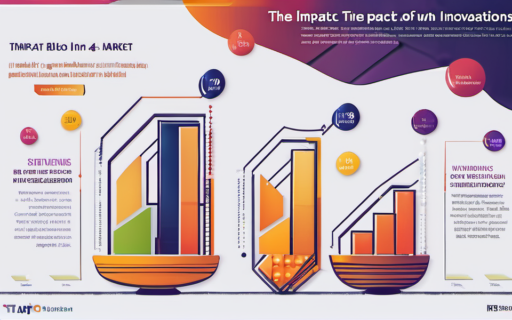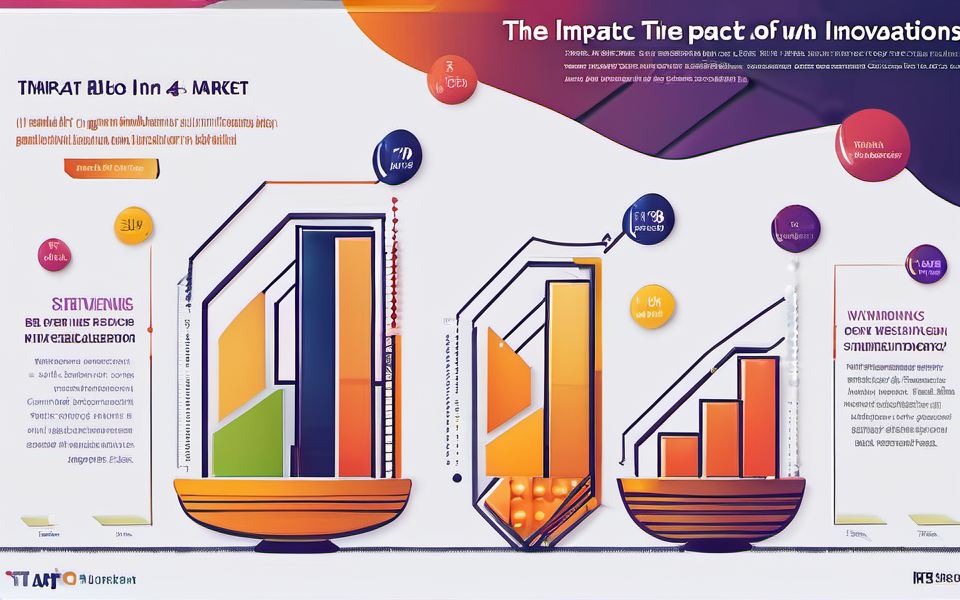Want to know the SECRET to skyrocketing market growth and unleashing disruptive innovation? It’s not some hidden formula or magic trick. The answer lies in the complex world of regulations and their surprising power to shape our future!
We’re all aware of how regulations can restrict businesses, stifle creativity, and even kill off budding industries. But what if I told you regulations can actually be a force for good?
By carefully understanding the impact of regulations, we can harness their power to unlock unparalleled opportunities for innovation and propel the market to unprecedented heights. This isn’t just theory – history is full of examples where clever regulations paved the way for revolutionary products and booming industries. Ready to learn how? Buckle up, because we’re going deep into the world of regulations and their hidden influence on growth and innovation.
Regulation: A Catalyst for Innovation
Don’t mistake me; regulations can be cumbersome and complex. But, let’s break down the different ways they can be a driving force behind market success:
Creating a Level Playing Field:
Imagine a marketplace with no rules – chaos! Regulations act like referees, establishing fair rules of the game for all participants. By setting clear standards and guidelines, regulations promote healthy competition, incentivizing innovation, and preventing monopolies from stifling competition. Think of it like this: the regulations create a sandbox for entrepreneurs to build and test new ideas, knowing the playing ground is fair.
This leads to an environment where businesses can focus on what matters: developing groundbreaking products and services, leading to better offerings and value for consumers. **It’s the same concept behind regulatory frameworks in *safety* and quality control, like the *Food and Drug Administration* in the United States, or The European Medicines Agency in Europe. They establish standards, protect consumers, and promote trust, leading to more investment and ultimately driving market growth.**
Protecting Consumers and Driving Trust:
Let’s face it, consumers are often wary of untested products or services. Regulations act as a trusted guardian, setting safety standards and guidelines, giving consumers the confidence to invest in new technologies and innovative offerings. Think of regulations as the invisible shield that makes consumers feel safe buying a new smartphone with sensitive data, taking a plane trip knowing it adheres to strict safety regulations, or using online banking with the security of knowing it meets industry standards. Regulations are the bedrock of consumer confidence, empowering market expansion and accelerating growth.
Encouraging Responsible Business Practices:
From responsible environmental practices to safeguarding data privacy, regulations can nudge businesses towards ethical and sustainable business models.
**For example, stringent environmental regulations are forcing companies in *energy and manufacturing* industries to develop sustainable solutions. **This doesn’t just benefit the environment – it creates huge market opportunities for *renewable energy technologies*, *recycling solutions*, and *eco-friendly materials.* The shift towards ESG (Environmental, Social, and Governance) investing highlights how regulations are influencing investment decisions and shaping the future of sustainable business.
Nurturing Innovation and Technological Advancement:
Now, this is where things get interesting. Regulations can spark innovation! **Think about the *automobile industry* and the regulations that drove innovation in safety, fuel efficiency, and emissions control. The same applies to the tech industry. Regulations on data privacy like *GDPR (General Data Protection Regulation)* have prompted tech companies to develop groundbreaking data protection technologies and prioritize user privacy. The result? A market shift towards data-driven products and services with privacy at their core.
Unleashing the Potential of Regulatory Innovation:
Now, it’s important to understand the potential of regulatory innovation itself. This isn’t about burying businesses with restrictive rules. Instead, it’s about crafting **flexible, future-proof regulations that foster creativity and adaptation, encouraging dynamic and adaptable markets. *Here’s where regulations shine:*
- Sandboxes – Imagine a controlled environment where businesses can test and refine new technologies without the risk of major disruptions. Sandboxes offer a space for experimentation, **accelerating the development of emerging industries such as *artificial intelligence (AI)*, *blockchain technology*, *fintech*, and *the Internet of Things (IoT)*. *By promoting experimentation, regulations enable businesses to quickly refine their models and enter the market faster, fueling industry growth and economic impact.*
- Adaptive Regulations – This is where the focus shifts from strict rules to guiding principles and frameworks. Instead of hindering progress, these regulations offer flexibility, adapting to emerging technologies and evolving needs, ensuring sustainable innovation and growth.
Navigating the Regulatory Maze: Finding the Right Balance
Navigating the complex world of regulations is a balancing act. While regulations play a crucial role in driving innovation, it’s important to recognize that overly strict or burdensome regulations can stifle growth.
Striking the Golden Balance:
This is where smart regulations and collaborative approaches between policymakers, regulators, and industry leaders become essential. It’s about having a shared understanding of market needs, technology evolution, and the evolving regulatory landscape to:
- Promote fair and competitive markets.
- Create a stable and predictable regulatory environment.
- Ensure adaptability to evolving technological trends.
- Foster trust among stakeholders – consumers, businesses, and policymakers.
**The aim is to create a system that’s *both supportive and flexible*, empowering innovation while protecting consumers and the wider societal good. *Think of it as a finely tuned machine where regulations serve as the cogs that keep the wheels of growth and innovation turning.*
Key Takeaways
The journey towards achieving dynamic markets fueled by responsible innovation begins by embracing regulations as a driving force for good.
Here’s what to remember:
-
Regulations are not just limitations; they can be catalysts for innovation.
-
A careful blend of adaptable, future-proof regulations can unlock new possibilities and drive market growth.
-
Collaboration between regulators, businesses, and policymakers is key to creating a regulatory framework that supports innovation and safeguards consumer interests.
The world of regulations is a fascinating world filled with opportunities to unlock potential and drive sustainable growth. It’s time to look beyond the limitations and embrace the transformative power of well-structured, adaptable regulations in creating the future we all envision!






